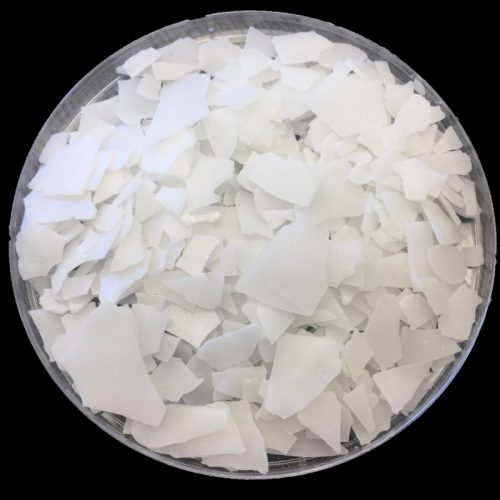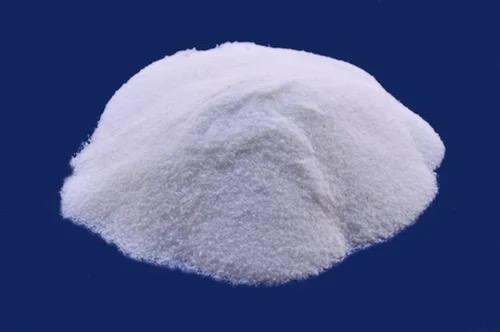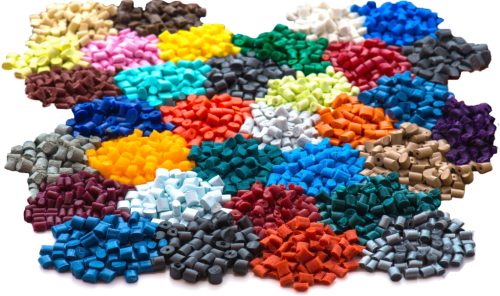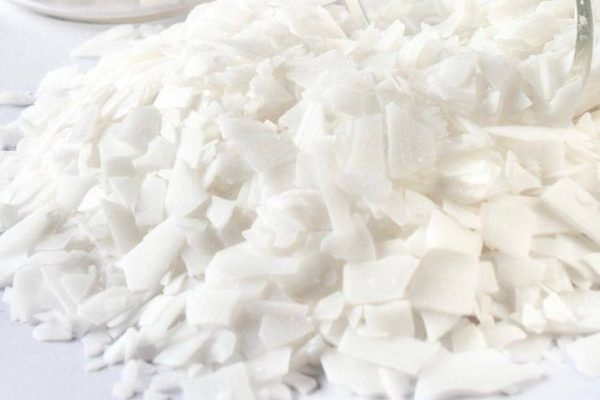Polyethylene wax, often referred to as PE wax, is a versatile and widely used material in the polymer industry. It serves as an important additive that plays a crucial role in various polymer processing applications. Due to its excellent properties, such as a high melting point, low viscosity, and strong resistance to chemicals and abrasion, polyethylene wax significantly enhances the performance of different polymers. In this article, we will explore the role of polyethylene wax in polymer processing, highlighting its benefits, applications, and answering frequently asked questions.
What is Polyethylene Wax?
Manufacturers typically produce polyethylene wax as a low molecular weight polymer through the polymerization of ethylene gas. They can make it in various grades, with properties like melting point, hardness, and viscosity that they can tailor to specific applications. Polyethylene wax is available in both crystalline and amorphous forms, and they can modify it through various processes such as oxidation, sulfonation, or grafting to achieve the desired characteristics.
Polyethylene wax typically appears as a white or off-white powder or pellet. It is non-toxic, odorless, and has excellent thermal stability, making it suitable for a wide range of applications in polymer processing.

Polyethylene Wax Benefits in Polymer Processing
Polyethylene wax offers numerous benefits that significantly enhance the performance of polymers. Below are some of the key advantages of using polyethylene wax in polymer processing:
[table id=1 /]
1. Improved Lubrication
Polyethylene wax acts as an excellent lubricant in polymer processing. It reduces friction between the polymer and processing equipment, such as extruders, injection molding machines, and calenders. This enhanced lubrication results in smoother processing, better surface finish, and reduced wear on machinery components. It also minimizes energy consumption during processing, as operators require less force to move the polymer through the equipment.
2. Enhanced Flow Properties
The use of polyethylene wax in polymer processing improves the flow properties of the polymer melt. It lowers the melt viscosity, making it easier to process the polymer in different manufacturing techniques. This improvement in flow properties allows for faster production rates, reduced cycle times, and better dimensional accuracy in the final product.
3. Better Release Properties
Polyethylene wax provides excellent release properties, which makes it valuable in molding applications. When used as an additive in molds or as a coating for molds, polyethylene wax helps in the easy removal of the molded part from the mold. This reduces the risk of damage to the part and the mold, improving the overall efficiency and cost-effectiveness of the process.
4. Improved Surface Quality
Polyethylene wax helps improve the surface quality of finished products. Its smooth texture, coupled with its ability to reduce friction, gives the final product a shiny and smooth finish. This is especially important in industries where the appearance and aesthetics of the polymer product are critical, such as in packaging, automotive, and consumer goods.
5. Enhanced Stability
Polyethylene wax helps in improving the thermal stability of polymers. By acting as a stabilizer, it prevents thermal degradation during high-temperature processing, ensuring that the polymer maintains its desired properties. This is particularly valuable in high-temperature processes like extrusion and injection molding, where the polymer is exposed to heat for prolonged periods.
6. Cost-Effective
Incorporating polyethylene wax into the polymer processing formulation can be a cost-effective solution. Due to its ability to enhance processing speed, improve quality, and reduce wear and tear on equipment, manufacturers can achieve significant cost savings over time. The reduction in energy consumption and processing time alone can make a considerable difference in production costs.
7. Environmental Benefits
Polyethylene wax is generally regarded as an environmentally friendly material. It is non-toxic and does not contain harmful additives or solvents, which makes it safer to handle and process. Additionally, polyethylene wax is biodegradable and does not contribute significantly to environmental pollution, making it a more sustainable option compared to some other waxes and additives.
8. Increased Durability and Resistance
Polyethylene wax improves the durability of polymer products by enhancing their resistance to abrasion, weathering, and chemicals. This is especially important in applications where the polymer is exposed to harsh environments or mechanical wear. Polyethylene wax adds a protective layer to the surface of the polymer, increasing its longevity and making it more suitable for demanding applications.

Applications of Polyethylene Wax in Polymer Processing
Polyethylene wax plays a key role in a variety of polymer processing applications, where its unique properties provide valuable performance enhancements. Some of the common applications of polyethylene wax include:
1. Plastic Industry
In the plastic industry, manufacturers use polyethylene wax as a lubricant, processing aid, and surface modifier. It helps reduce the friction between the plastic melt and the machinery, making it easier to extrude or mold plastics into various shapes. It also improves the surface appearance of plastic products, making them more visually appealing.
2. Rubber Industry
Polyethylene wax is also used in the rubber industry to improve the processing and performance of rubber compounds. It acts as a dispersing agent, improving the uniformity of the rubber mixture. Additionally, it helps reduce the viscosity of the rubber melt, enabling easier processing and shaping of the rubber.
3. Coatings Industry
In the coatings industry, manufacturers use polyethylene wax to improve the flow and leveling properties of coatings. It enhances the surface finish of the coated product and provides additional resistance to abrasion and scratching. Polyethylene wax is commonly used in automotive paints, industrial coatings, and decorative coatings for consumer goods.
4. Masterbatch Production
Masterbatches are concentrated mixtures of pigments or additives that manufacturers add to a base polymer to achieve specific properties in the final product. Polyethylene wax commonly appears in the production of masterbatches to improve the dispersion of pigments and additives within the polymer matrix. It helps ensure a uniform distribution of color and improves the ease of processing the masterbatch.
5. Thermoplastic Processing
Polyethylene wax frequently appears in thermoplastic processing techniques like extrusion, injection molding, and blow molding. Its ability to lower melt viscosity and improve flow properties makes it an ideal additive for these processes. It also enhances the release properties, making it easier to remove the molded parts from the molds without damaging them.
6. Asphalt and Bitumen
Manufacturers sometimes use polyethylene wax in the modification of asphalt and bitumen. It improves the flowability and workability of asphalt during the paving process, making it easier to apply and spread. Additionally, it increases the resistance of asphalt to aging, cracking, and rutting, making it more durable for road construction.
Polyethylene Wax in Masterbatches
Polyethylene wax commonly appears in the production of masterbatches for the polymer industry. A masterbatch is a concentrated mixture of additives or pigments that manufacturers blend with the base polymer to enhance the properties of the final product. Polyethylene wax serves several key functions in masterbatch production:
- Lubrication: It acts as a lubricant to reduce friction and improve the processing of the polymer during the mixing of pigments and other additives.
- Dispersion: It helps disperse the additives evenly throughout the polymer matrix, ensuring consistent quality in the final product.
- Improved Flowability: Polyethylene wax reduces the viscosity of the polymer blend, making it easier to process and form into the desired shape.

FAQ: Polyethylene Wax in Polymer Processing
1. What is polyethylene wax used for in polymer processing?
Polyethylene wax improves lubrication, enhances flow properties, improves surface quality, and reduces processing time. It also provides better release properties in molding applications.
2. Can polyethylene wax be used in food packaging?
Yes, polyethylene wax is generally considered safe for use in food packaging. It is non-toxic, odorless, and does not contain harmful chemicals, making it suitable for food-contact applications.
3. Is polyethylene wax biodegradable?
Yes, polyethylene wax is biodegradable and considered environmentally friendly. It does not contribute significantly to environmental pollution and is a safer alternative compared to some other additives.
4. What industries benefit from polyethylene wax in polymer processing?
Polyethylene wax widely appears in industries such as plastic manufacturing, rubber processing, coatings, and asphalt production, where it enhances the properties of the polymer and improves the efficiency of processing.
5. How does polyethylene wax improve processing efficiency?
Polyethylene wax reduces friction and viscosity during processing, leading to faster production rates, reduced energy consumption, and improved surface finishes, ultimately increasing processing efficiency.
Conclusion
Polyethylene wax plays an essential role in polymer processing by offering numerous benefits such as improved lubrication, enhanced flow properties, and better surface quality. It provides a cost-effective and environmentally friendly solution for improving processing efficiency and product performance. From plastic and rubber manufacturing to coatings and asphalt, polyethylene wax is an indispensable additive that ensures high-quality results and smoother operations in a variety of polymer-related industries.
By incorporating polyethylene wax into polymer formulations, manufacturers can significantly enhance the quality and durability of their products while reducing energy costs and processing time. Whether used in extrusion, injection molding, or masterbatch production, polyethylene wax remains a critical component in modern polymer processing.

